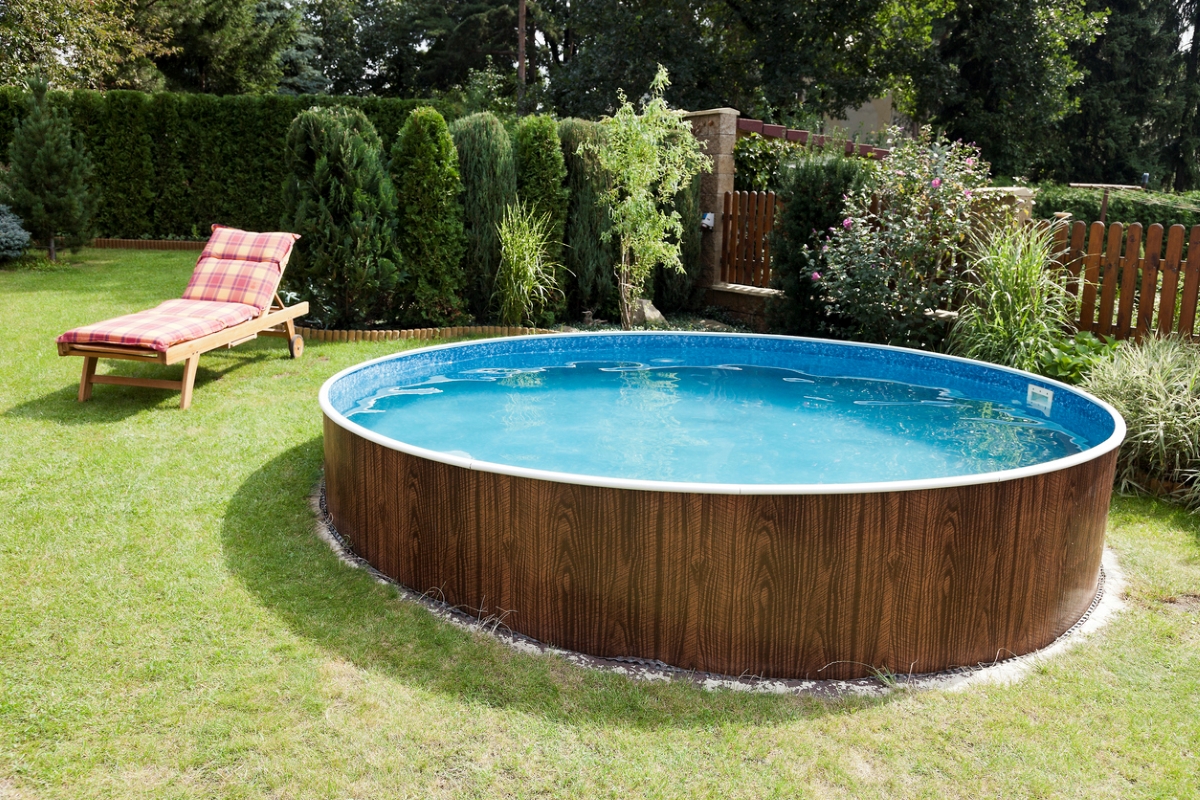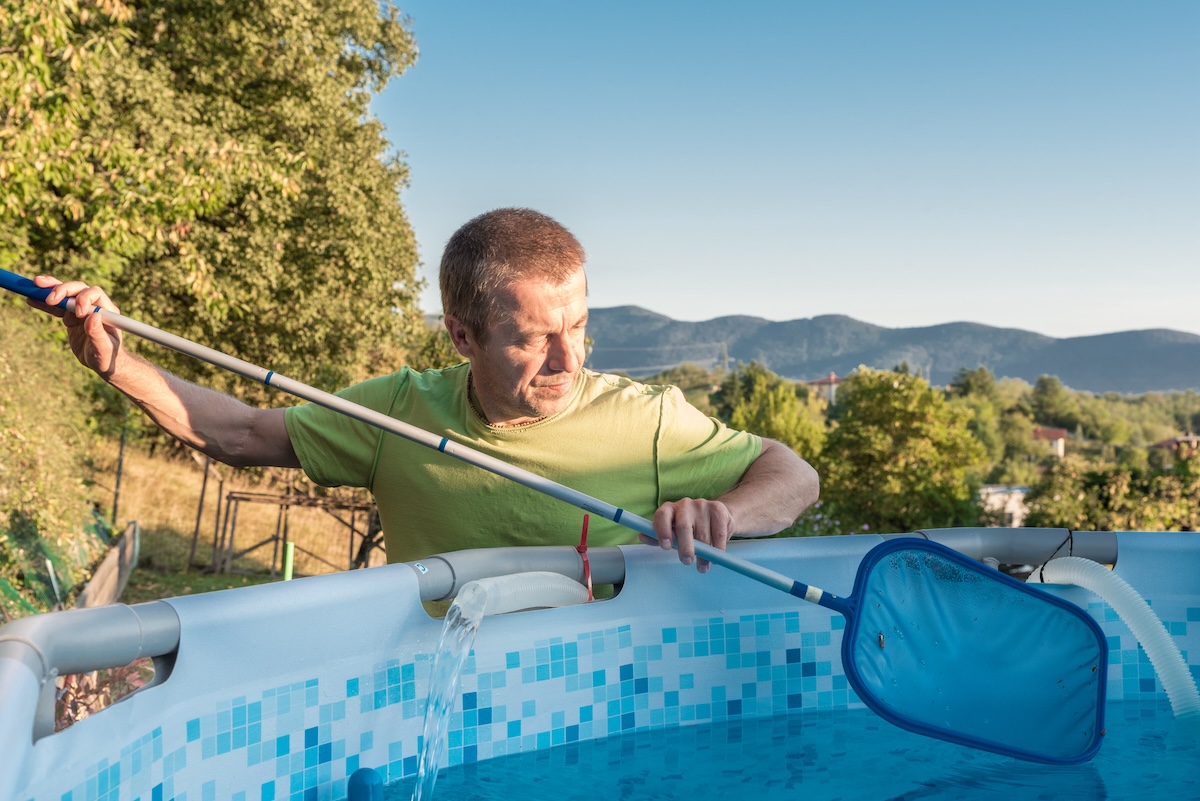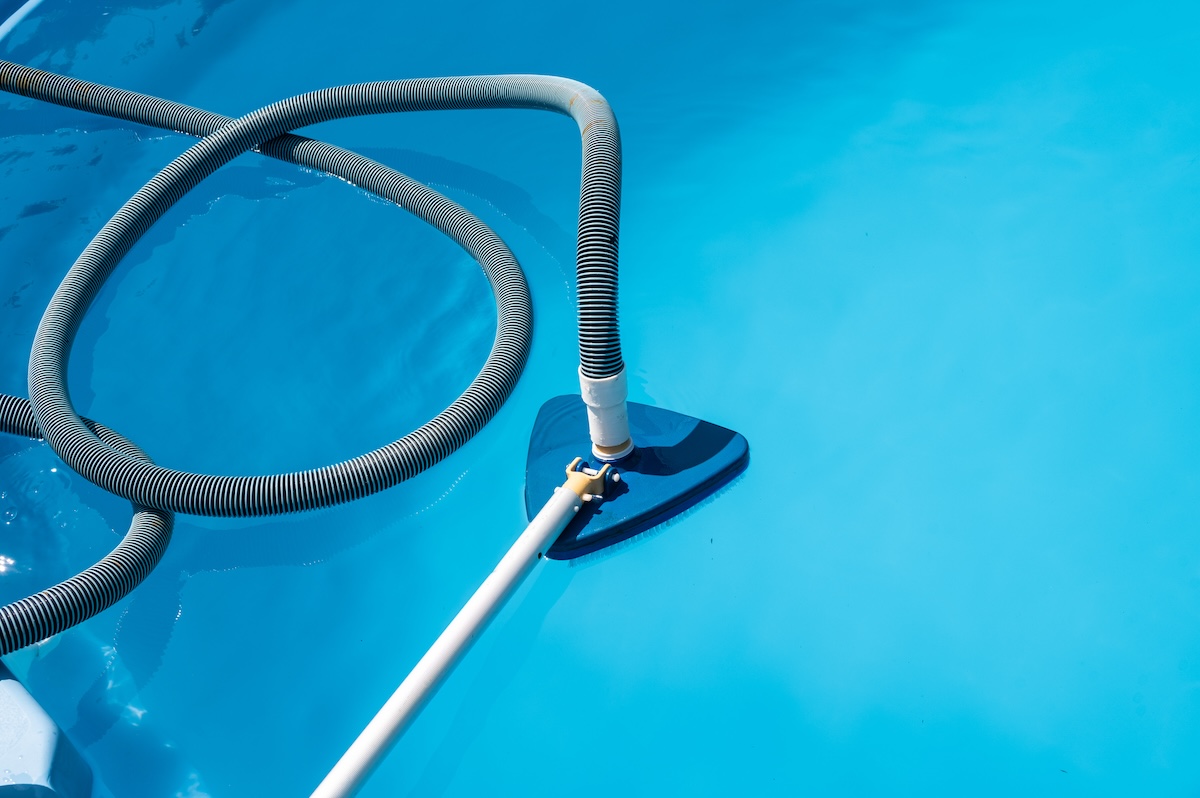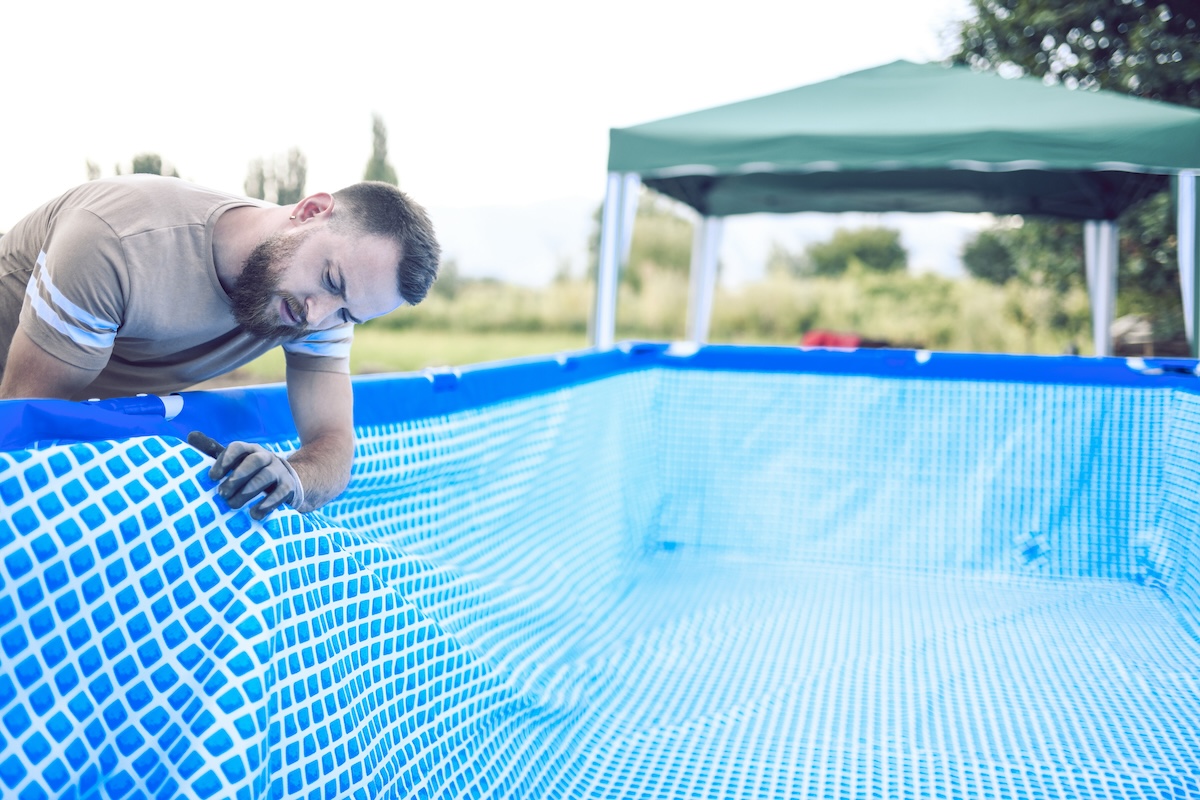

We may earn revenue from the products available on this page and participate in affiliate programs. Learn More ›
Above-ground pools are a popular choice for backyard summer fun, with an estimated 4.3 million installed across the U.S. These pools are budget-friendly alternatives to in-ground pools, are relatively easy to install, and are available in a variety of shapes and sizes to suit different yards and lifestyles.
While many newer models come equipped with features like built-in filtration systems or easy-drain valves that simplify maintenance, routine care is still essential. Skipping maintenance can lead to cloudy water, algae buildup, or even health and safety risks. Fortunately, taking care of an above-ground pool doesn’t have to break the bank. On average, DIY pool maintenance costs between $80 and $1,050, while hiring a professional service could run $50 to $100 per hour for an above-ground pool.
Whether you’re a first-time pool owner or just need a refresher before swim season, here’s what you need to know about above-ground pool maintenance to keep your pool clean, clear, and ready for use all summer long.
Daily Maintenance Tasks

Above-ground swimming pool care is not difficult, but works best if you pay regular attention to maintaining your pool and its water quality. To stay ahead of potential problems, perform these tasks daily.
1. Test the pool’s pH levels.
Maintaining the right chemical balance is essential to keeping your pool water clean, clear, and safe for swimmers. Chlorine helps eliminate bacteria, algae, and other microorganisms, but its effectiveness can drop with sun exposure, heavy use, or rainfall. Daily testing with a pool test kit will make sure that chlorine levels stay within the recommended range of 2.0 to 4.0 parts per million (ppm).
Alongside chlorine, it’s important to check the water’s pH level, which should be between 7.4 and 7.6. A balanced pH not only keeps the water comfortable for swimmers but also protects your pool equipment from corrosion and helps chlorine work more effectively. If the pH is too low, a common fix is to add a pH increaser such as baking soda.
2. Skim the water.
Even with a functioning filtration system, leaves, bugs, and other debris can quickly build up on the water’s surface, especially if your pool is near trees or plants. Skimming the water daily with a pool net helps prevent this debris from sinking to the bottom or clogging your filter. It’s a quick task that goes a long way in keeping your pool looking clean and inviting.
3. Run the pump for at least 8 hours a day.
Running the pump daily is an important part of above-ground pool upkeep. The pump has the important job of circulating the pool’s water, and that movement helps keep the pool clean. This is one reason why you want to choose the best pool pump possible.
Circulating water helps move dirt and debris toward skimmer baskets and lessens the opportunity for algae growth. Because pumps might not circulate your water perfectly, use a pool brush or other long tool to agitate the water in spots with poor flow.
While you don’t need to leave your pool’s pump running constantly, running it for at least 8 hours each day is a good rule of thumb to follow. However, some manufacturers may have different recommendations, so it is always a good idea to consult the user’s manual.
4. Clean out the pump and pool skimmer baskets.
When you’re thinking about how to maintain a pool, don’t forget to empty the skimmer and pump baskets daily. The skimmers pull leaves and other smaller debris floating on the water surface. The skimmer basket holds the debris, stopping it from finding its way to the pump or filter. Emptying these baskets as part of your above-ground pool care routine will keep your pool cleaner and help prevent clogs.
In addition to emptying skimmer baskets, you should check and empty your above-ground pool’s pump basket every day. This basket holds debris that made it past the skimmer baskets or were pulled in through the pool’s drains. Emptying this basket daily can keep the debris from getting into the pump itself, clogging the impeller and reducing the amount of water that is flowing through the system. Before emptying the basket, remember to turn off the pump.
Weekly Maintenance Tasks

Cleaning an above-ground pool also involves a few tasks you only need to complete once a week, such as vacuuming and a shock treatment for the water. You’ll also want to pay weekly attention to the pool’s filter during swimming season.
1. Vacuum the pool.
Even with regular skimming, dirt and debris can settle at the bottom of your above-ground pool and its steps. Vacuuming the pool once a week helps keep the floor clean and prevents buildup that can lead to algae or cloudy pool water. You can use an above-ground pool vacuum or an automatic cleaner, depending on your setup and preferences. Either way, consistent vacuuming helps your pool look its best and keeps the water healthier for swimming.
2. Shock your above-ground pool’s water.
Shocking an above-ground pool on a weekly basis is another important aspect of its maintenance. Pool shock treatments help remove contaminants like bacteria and algae from the water. Pool shock is a powdered form of chlorine that increases the water’s level of “free chlorine”; shocking the pool can be especially beneficial following a rainstorm or after several people recently swam in the pool.
You should shock your pool in the evening. Otherwise, sunlight can break down the chlorine before it’s fully able to do its job. After adding shock to the pool, turn the pump on and let it run for 8 or more hours. Avoid swimming in the pool until the following day.
3. Clean your pool filter.
Whether you have a sand, cartridge, or diatomaceous earth (DE) pool filter, make sure to clean it regularly. The pool filter removes particles from the water, leaving it clean and safe for swimming. Without proper cleaning, the water in the pool might become polluted. It is also possible for the filter to clog, leading to a larger problem.
Check the manufacturer’s recommendations and clean your filter regularly. In most cases, you should remove cartridge filters and clean them with a water hose about once a week; replace them every 1 to 2 years. Sand and DE filters should be backwashed about once per month and replaced or refilled every 3 to 5 years.
If you need an above-ground pool filter, consider the Intex Krystal Clear Sand Filter Pump, the top pick in our guide to the best above-ground pool filters.
Other Maintenance Tasks

To keep your above-ground pool in good condition, pay attention to its structure to address possible leaks. If you don’t use the pool during cold months, be sure to winterize it properly.
1. Clean and patch the pool liner.
Your liner does more than hold water: It helps protect the structure of the pool. Over time, algae, grime, and sunscreen residue can build up on the liner, especially along the waterline. Gently scrubbing it with a soft brush or sponge every few weeks helps prevent staining and keeps your pool looking fresh.
It’s also a good idea to inspect the liner regularly for small tears or punctures, which can lead to leaks. If you spot any damage, patch it right away using a vinyl repair kit made for above-ground pools. Staying on top of small issues can help you avoid bigger problems down the road, and extend the life of the pool.
2. Winterize the pool properly.
It’s actually best to leave above-ground pools filled with water for the winter, rather than draining them. If you live in an area where you can’t swim all year and must winterize the pool, doing so properly will ensure it’s in a safe and usable shape next year. While you could pay to have a local maintenance service winterize your pool, you can also do it yourself to save money.
To winterize the pool, start by performing a thorough cleaning. After cleaning the pool, ensure the chlorine and pH levels are balanced and add in winterizing chemicals. Then, remove and safely store the pump, filter, skimmer, pool lines, above-ground pool steps, and any other accessories and supplies. Finally, cover the pool using an air pillow and pool cover. The air pillow will hold up the cover, preventing it from freezing with the water in the pool.
3. Protect your home from leaks.
While it’s easy to focus on maintaining your pool itself, it’s just as important to think about how your pool setup could impact your home. If the pool leaks or overflows, water can permeate the landscaping around the above-ground pool; it may even reach your home’s foundation and seep into the basement or crawl space. These incidents can lead to costly damage, mold, and mildew.
To reduce the risk of pool water ending up in your home’s basement, consider installing a sump pump. A sump pump can help redirect water away from the foundation during heavy rain or unexpected leaks. It’s also smart to position your pool according to local building codes and safety guidelines, which often require keeping it a certain distance from your home’s structure to allow for proper drainage.
Finally, regularly check the ground around the pool for signs of pooling water or erosion. Taking a few precautions now can help protect your home and give you peace of mind throughout pool season.
